Sustainable Interior Design: Trends and Best Practices
TL;DR: Sustainability in Interior Design
- Sustainable interior design creates spaces that feel noticeably different—calmer, healthier, and more connected to nature.
- Energy efficiency forms the foundation of sustainable design, offering the biggest environmental impact and financial returns.
- Biophilic design elements dramatically improve wellbeing through plant integration, natural light, and connections to nature.
- Indoor air quality directly impacts health—choose non-toxic materials, proper ventilation, and natural elements.
- Real-world examples like Bosco Verticale and Singapore’s Jewel demonstrate how nature integration transforms spaces.
- Sustainable design is becoming accessible at all price points through mainstream retailers and innovative business models.
Introduction
When you walk into a truly sustainable interior space, something feels distinctly different. The air seems fresher, the light more natural, and there’s an intangible harmony that conventional spaces often lack. This difference isn’t just psychological—it’s rooted in tangible elements that benefit both our wellbeing and the planet.
Sustainable interior design has evolved far beyond simply selecting eco-friendly materials. It represents a fundamental shift in how we create living environments that work with nature rather than against it. This comprehensive approach considers environmental impact, human health, and resource efficiency throughout a space’s entire lifecycle.
I believe sustainable design’s most compelling aspect is how it transforms both the physical space and the experience of being in that space. It’s about creating environments that nurture occupants while respecting planetary boundaries—a balance that benefits everyone involved.
The Evolution of Sustainable Interior Design
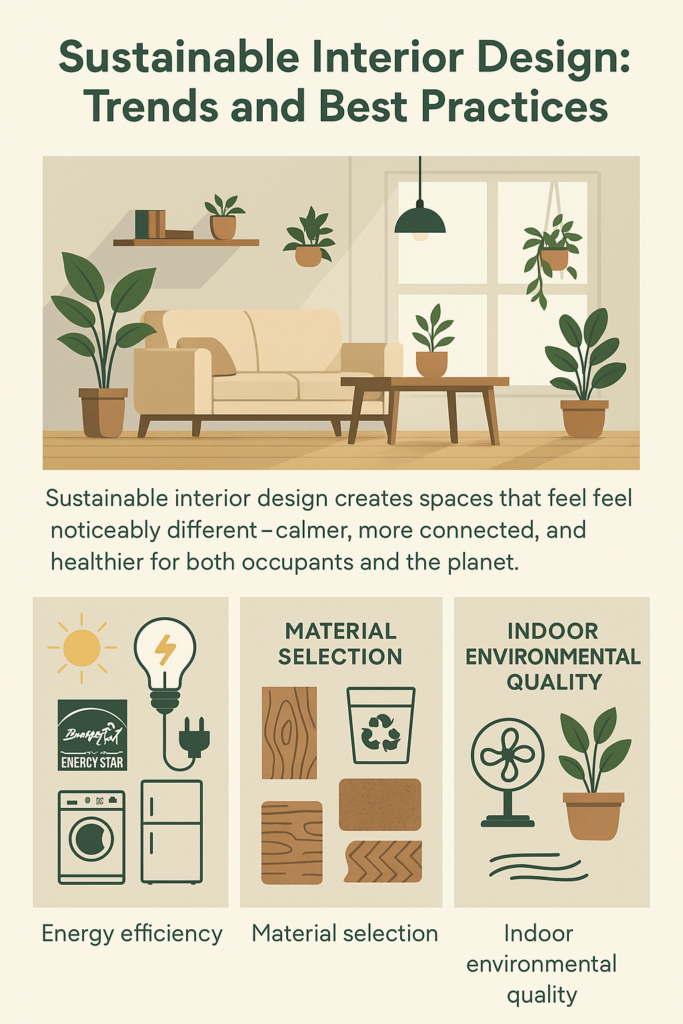
Sustainable interior design projects changed from a fringe movement with limited, often uninspiring options to a sophisticated approach with endless possibilities.
Market forces have dramatically changed the landscape. Increased demand has driven prices down, making sustainable options competitive with conventional alternatives. Manufacturing innovations have created eco-friendly materials that match or exceed the performance of traditional options. And consumer awareness has skyrocketed, transforming sustainability from a niche concern to a mainstream priority.
I think the pandemic accelerated this evolution in ways nobody anticipated. Extended periods confined within our homes heightened awareness of indoor environments and their impact on our health. The importance of clean air, natural light, and connections to nature became undeniable as people spent unprecedented time in their living spaces.
What’s particularly exciting is how sustainable design has become synonymous with beautiful design. Gone are the days when “eco-friendly” meant sacrificing aesthetics. Today’s sustainable interiors are among the most stunning, innovative spaces being created—proving that environmental responsibility and design excellence are perfectly compatible.
Key Principles of Sustainable Interior Design
Energy Efficiency: The Hidden Powerhouse

Energy efficiency forms the foundation of sustainable interior design, though it’s often the least visible aspect. This invisibility belies its importance—energy-conscious design dramatically reduces environmental impact while creating more comfortable, functional spaces.
Start with optimizing natural light through strategic window placement, reflective surfaces, and open floor plans. Install energy-efficient LED lighting with smart controls that adjust based on occupancy and daylight availability. Choose ENERGY STAR appliances that minimize electricity and water consumption without sacrificing performance.
I believe the most effective approach combines these visible elements with behind-the-scenes improvements. Proper insulation, weather sealing, and high-efficiency HVAC systems might not impress visitors, but they significantly improve comfort while reducing environmental footprint. These foundational elements often deliver the most substantial benefits, though they rarely receive the attention of more visible design elements.
What’s fascinating about energy efficiency is how it enhances the overall experience of spaces. Properly daylit rooms aren’t just more energy-efficient—they’re more uplifting and beautiful. Well-insulated interiors aren’t just more efficient—they’re quieter and more comfortable. These synergies between efficiency and experience make energy-conscious design particularly valuable.
Material Selection: Beyond Green Labels

Truly sustainable material selection requires looking beyond simplistic “eco-friendly” labels to understand complete lifecycle impacts. Many materials marketed as sustainable address only a single environmental concern while creating others elsewhere.
Choose rapidly renewable materials like bamboo and cork that regenerate quickly. Opt for reclaimed or recycled products that divert waste from landfills. Select low-VOC paints, finishes, and adhesives that won’t contaminate indoor air with harmful chemicals.
I’m convinced that material sustainability isn’t just about initial environmental impact—it’s equally about longevity and performance. A material’s overall sustainability emerges from multiple factors: how it’s sourced, how it’s manufactured, how it performs during use, and what happens at the end of its useful life. The most sustainable choices balance immediate environmental benefits with long-term durability, creating spaces that remain beautiful and functional for decades.
Indoor Environmental Quality: The Wellness Connection
The quality of your indoor environment directly impacts your health in profound ways. Conventional building materials and furnishings can release hundreds of chemicals into your air, potentially contributing to respiratory issues, headaches, cognitive impairment, and more serious long-term health problems.
I think this health dimension represents the most direct connection between sustainable design and human wellbeing. By selecting non-toxic materials, ensuring proper ventilation, and incorporating natural elements, sustainable interiors actively support physical and mental health rather than potentially compromising it.
Choose non-toxic materials and finishes that won’t contaminate your air. Install ventilation systems that bring in fresh air while removing pollutants. Use natural fibers for upholstery, curtains, and bedding to reduce exposure to synthetic chemicals. Add plants throughout your space—they naturally filter air while providing psychological benefits.
What makes indoor environmental quality particularly significant is its immediate perceptibility. While energy efficiency benefits may take months to appear on utility bills, the enhanced comfort of a space with excellent indoor environmental quality is immediately apparent. This tangible improvement creates a powerful motivation for sustainable design adoption that transcends purely environmental concerns.
Current Sustainable Design Trends
Biophilic Design: Nature’s Powerful Influence
Biophilic design—integrating natural elements and experiences into built environments—has emerged as one of the most significant movements in sustainable interior design. This approach recognizes our innate connection to nature and seeks to strengthen it within indoor spaces.
Incorporate living walls or vertical gardens as dramatic focal points that improve air quality. Use natural materials like wood and stone with visible grain patterns and tactile textures. Maximize views of outdoor environments and natural light. Consider water features that provide both visual interest and soothing sounds.
I believe biophilic design’s power lies in its multisensory approach. It engages not just vision but also touch, sound, and even smell, creating rich, immersive experiences that connect us with natural elements. This multidimensional engagement explains why biophilic spaces feel so different from conventional interiors—they activate more of our senses and tap into innate biological responses to natural environments.
Research consistently demonstrates that biophilic environments reduce stress, enhance creativity, improve cognitive function, and accelerate healing. These benefits aren’t just psychological—studies have documented physiological responses including reduced heart rate, lower blood pressure, and decreased stress hormone levels in biophilic spaces.
Real-World Example: Bosco Verticale, Milan
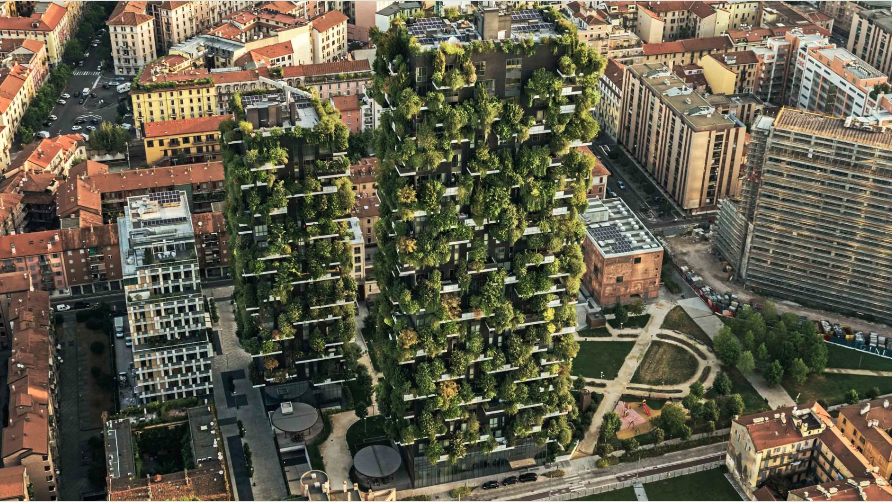
The Bosco Verticale (Vertical Forest) in Milan exemplifies biophilic design at an architectural scale. Designed by Stefano Boeri Architetti, these residential towers feature over 20,000 plants and trees distributed across balconies and façades.
Beyond their striking appearance, these towers deliver significant environmental benefits. The extensive vegetation absorbs approximately 30 tons of CO2 annually while releasing oxygen and filtering particulate matter from the surrounding air. The plants also provide natural cooling, reducing the need for air conditioning in summer months.
What makes this project particularly significant is how it challenges the traditional separation between architecture and nature. Rather than treating buildings and vegetation as separate elements, Bosco Verticale integrates them into a single living system that benefits both human inhabitants and the broader urban ecosystem.
Circular Economy: Rethinking Product Lifecycles
The circular economy approach represents a fundamental shift from the traditional “take-make-waste” model that has dominated interior design for generations. Instead of viewing products as having a linear lifecycle ending in disposal, circular design focuses on materials and goods that can be continuously reused, repurposed, or recycled.
Look for furniture designed for disassembly, with components that can be replaced or recycled when worn. Choose textiles made from recycled fibers that can themselves be recycled again. Select flooring with take-back programs that ensure proper recycling at the end of its useful life.
I think what makes circular design particularly promising is its economic logic. The growing desire for closed material loops is creating entirely new business models, with companies offering furniture service agreements rather than one-time sales, maintaining ownership of materials and recapturing their value at the end of a product’s life.
This alignment of environmental and economic interests promises to accelerate circular design adoption far beyond what environmental concerns alone might achieve.
Smart and Integrated Systems: Invisible Sustainability
Smart technology is revolutionizing sustainable interior design by making resource efficiency automatic and effortless. These systems optimize energy and water use without requiring constant attention from occupants—making sustainability the default rather than something requiring ongoing conscious effort.
Install smart thermostats that learn your patterns and adjust temperatures accordingly. Use automated lighting systems that dim when natural light is sufficient. Add water monitoring systems that detect leaks and prevent waste before significant damage occurs.
I believe these technologies are particularly valuable because they address one of sustainable design’s biggest challenges: human behavior. Even the most environmentally concerned individuals don’t always remember to adjust thermostats, turn off lights, or check for water leaks. Smart systems handle these tasks automatically, ensuring consistent resource efficiency regardless of occupant attentiveness.
These technologies pair particularly well with biophilic design principles. Smart lighting can mimic natural daylight cycles, supporting circadian rhythms while conserving energy. Automated ventilation can maintain optimal air quality while minimizing heating and cooling losses. This convergence of nature-inspired design with cutting-edge technology represents sustainable interior design’s most exciting direction—combining ancient wisdom about human-nature connections with modern capabilities for resource optimization.
Real-World Example: The Edge, Amsterdam
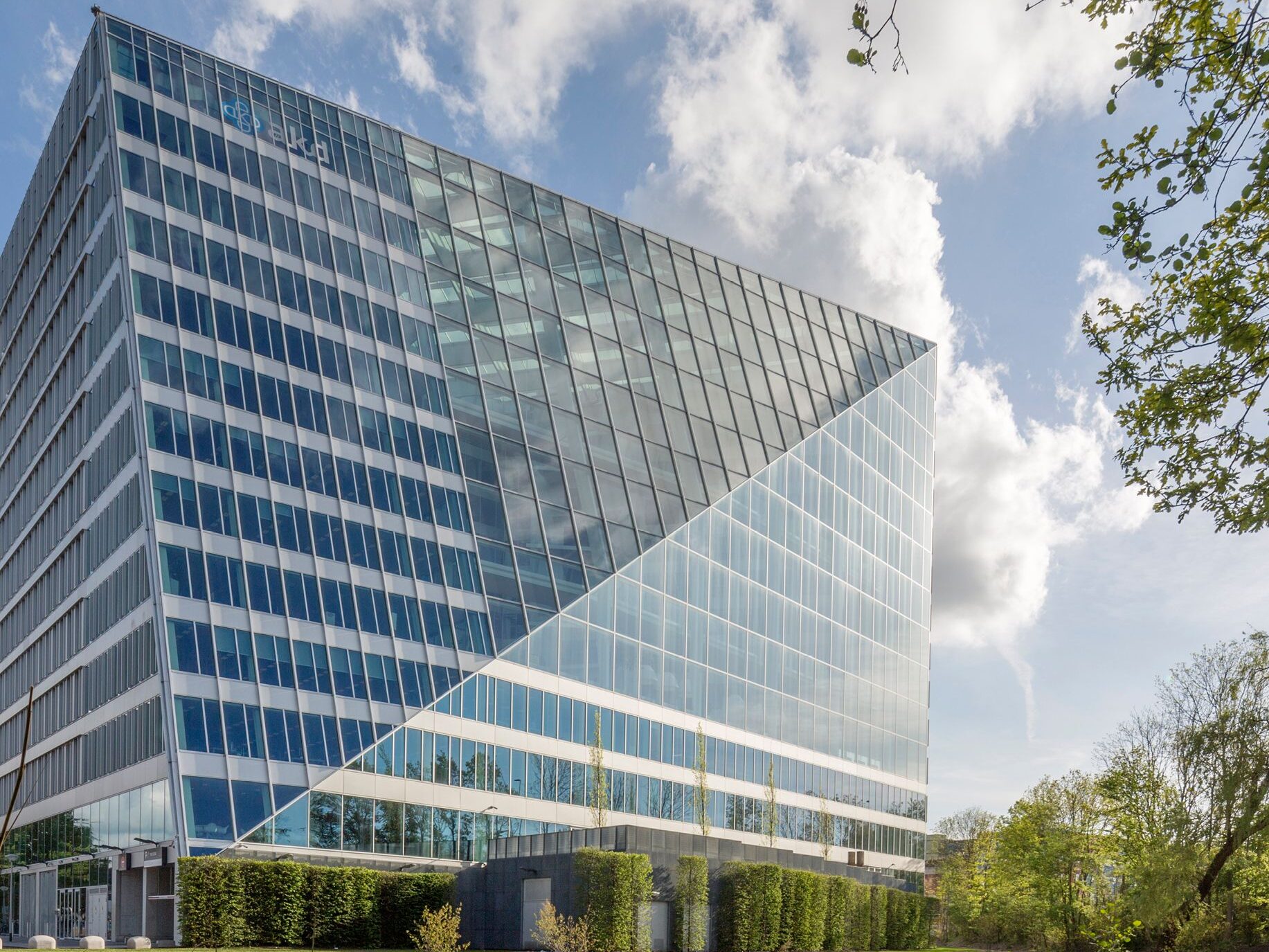
The Edge office building in Amsterdam demonstrates how smart systems can create unprecedented levels of sustainability. Often described as the world’s most sustainable office building, The Edge achieved the highest BREEAM certification score ever awarded (98.36%).
The building features 28,000 sensors that monitor occupancy, movement, lighting levels, humidity, and temperature. These sensors connect to a smartphone app that helps employees find parking spaces, available desks, or even colleagues. Meanwhile, the building management system continuously optimizes energy use based on occupancy patterns and weather conditions.
Perhaps most remarkably, The Edge produces more energy than it consumes through a combination of solar panels and efficient design. This energy-positive performance demonstrates how smart systems can transform buildings from energy consumers into energy producers—a fundamental shift with profound implications for sustainability.
Sustainable Materials and Products
The Material Revolution: Beyond Conventional Options

The sustainable materials sector has undergone a remarkable transformation in recent years. Materials once considered waste are being reimagined as valuable resources, while ancient building techniques are finding new applications in contemporary settings.
Use recycled glass countertops that divert waste from landfills while creating stunning, durable surfaces. Try cork flooring that’s naturally antimicrobial, sound-absorbing, and harvested without killing trees. Install reclaimed wood elements that bring unique character and history to your space.
I think what makes these materials particularly exciting is how they expand our aesthetic vocabulary. Sustainable materials often possess unique visual and tactile qualities that conventional options can’t match. The subtle variations in reclaimed wood, distinctive luster of recycled surfaces, and organic patterns of rapidly renewable materials create spaces with distinctive character and authenticity that mass-produced conventional materials simply can’t replicate.
This aesthetic dimension is significant because it challenges the notion that sustainability requires sacrifice. Rather than limiting design possibilities, sustainable materials actually expand them—offering unique qualities and characteristics unavailable in conventional products. This expansion of possibilities is driving sustainable material adoption among designers and consumers concerned primarily with aesthetics rather than environmental impact.
Certification Systems: Finding True Sustainability
Navigating sustainable material certification can feel overwhelming with its alphabet soup of acronyms, standards, and competing claims. Each certification addresses different aspects of sustainability, making direct comparisons challenging.
For wood products, look for FSC certification ensuring responsible forest management. Check for Cradle to Cradle certification that evaluates materials across multiple sustainability categories. Choose products with GREENGUARD certification that limits chemical emissions for better indoor air quality.
I believe certification systems provide their greatest value in the transparency they bring to material production and supply chains. Before widespread certification, understanding how materials were sourced or manufactured was nearly impossible for designers and consumers. Today’s certification systems, while imperfect, provide crucial visibility into previously opaque processes.
Rather than treating certifications as binary indicators of sustainability, I recommend using them as tools for understanding specific material attributes. A material’s overall sustainability emerges from the intersection of multiple factors—where it’s sourced, how it’s manufactured, what happens during use, and options for disposal or reuse. The most conscientious approach integrates certification information with broader knowledge about material properties and performance to make truly informed decisions.
Health and Well-being Benefits
Physical Health: The Space-Body Connection
The connection between interior environments and physical health becomes unmistakable when you experience spaces designed with wellbeing in mind. The quality of light affects your sleep patterns and energy levels. The materials surrounding you influence the air you breathe. The colors and patterns impact your stress response and cognitive function.
I’m particularly fascinated by emerging research on the measurable health benefits of biophilic design elements. Studies have documented reduced blood pressure, heart rate, and stress hormones in spaces incorporating natural elements—suggesting that our bodies physically respond to environments that connect us with nature. These physiological responses translate into concrete health outcomes, from improved respiratory function to enhanced immunity.
The COVID-19 pandemic dramatically accelerated awareness of interior environments’ health implications. Ventilation, material cleanability, and spatial arrangement suddenly became matters of urgent public health concern rather than merely design considerations.
This heightened awareness presents an unprecedented opportunity to advance sustainable design practices that enhance health protection while reducing environmental impact—demonstrating that human and planetary health are inextricably linked.
Mental Wellbeing: The Psychological Impact
Step into a thoughtfully designed sustainable interior, and you might notice an immediate shift in your mental state—a subtle relaxation, enhanced focus, or sense of connection. These responses aren’t coincidental—they reflect our psychological relationship with our surroundings, a connection that sustainable design principles specifically address.
The mental health benefits of sustainable interior environments have been consistently documented in research settings. One particularly striking study found that hospital patients with views of nature recovered faster and required less pain medication compared to those facing brick walls. Similar effects have been observed in workplace, educational, and residential settings—suggesting that our mental wellbeing is profoundly influenced by the design of our surroundings.
I believe these findings are particularly relevant for addressing contemporary mental health challenges. In an era of increasing anxiety, depression, and attention disorders, creating environments that naturally support psychological wellbeing represents a powerful preventive health strategy. The most valuable contribution of sustainable design may ultimately lie not in reducing carbon emissions or conserving resources, but in creating spaces that help us maintain psychological balance amid increasingly complex and demanding lives.
Real-World Example: Khoo Teck Puat Hospital, Singapore
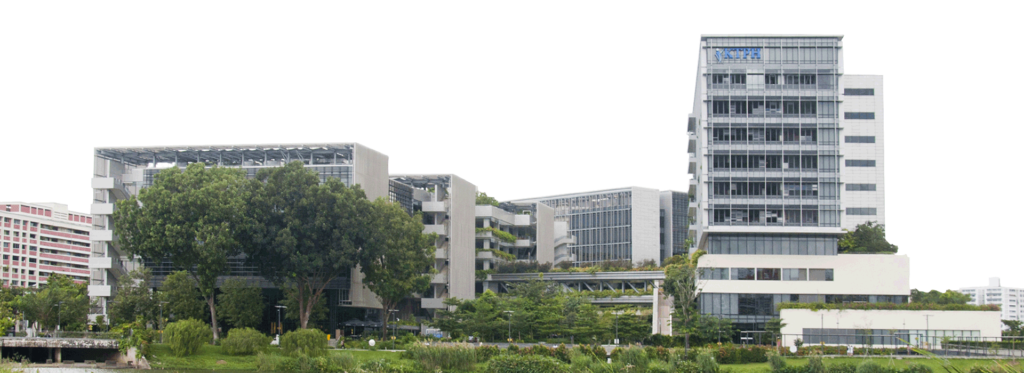
The Khoo Teck Puat Hospital (KTPH) in Singapore demonstrates how sustainable design principles can create healing environments that actively support patient recovery. Conceived as a “hospital in a garden, garden in a hospital,” KTPH integrates extensive greenery, natural light, and connections to nature throughout its campus.
The hospital’s biophilic elements include verdant rooftop gardens, cascading green walls, and interior courtyards filled with tropical plants. These spaces provide patients, visitors, and staff with continuous access to natural environments, creating a calming atmosphere that contrasts sharply with the institutional feel of conventional hospitals.
Research conducted at KTPH has documented multiple benefits from this approach, including reduced patient anxiety, lower pain medication usage, and faster recovery times. Staff report higher job satisfaction and lower burnout rates compared to those working in conventional healthcare settings. These outcomes demonstrate how sustainable design can contribute directly to healthcare objectives while creating more humane, supportive environments for healing.
Implementing Sustainable Design
Practical Steps: Starting Your Sustainable Journey
The journey toward a more sustainable home begins with understanding your current conditions and establishing priorities for improvement. Start with an assessment of your space’s energy performance, indoor air quality, water usage patterns, and material conditions to create a baseline for measuring progress.
I believe the most successful sustainable home transformations focus initially on the changes that deliver the greatest impact for the least disruption. For most homes, this means addressing energy efficiency first—upgrading insulation, sealing air leaks, improving HVAC systems, and enhancing lighting efficiency. These interventions often deliver both environmental benefits and immediate improvements in comfort and utility costs.
Material selections present the next frontier, particularly during planned renovations or furnishing updates. Rather than attempting to replace everything at once, focus on high-impact items with frequent interaction—flooring, paint, bedding, and upholstered furniture significantly influence indoor air quality and overall environmental footprint. Prioritize these elements, then gradually extend sustainable principles to other components as opportunities arise through normal replacement cycles.
What’s important to understand is that sustainable design isn’t an all-or-nothing proposition. Every eco-conscious choice, from LED light bulbs to low-VOC paint, makes a positive difference. This incremental approach makes sustainability accessible regardless of budget or timing constraints—allowing anyone to begin making positive changes immediately while planning for more substantial interventions over time.
Working with Professionals: Finding the Right Partners
The complexity of sustainable design often necessitates professional expertise, but finding partners who truly understand sustainability’s multiple dimensions can be challenging. The most valuable professionals bring both technical knowledge and a holistic perspective that balances environmental impact, health considerations, aesthetic goals, and practical constraints.
LEED-accredited designers offer particular value for sustainable projects, bringing structured methodology and comprehensive knowledge to the process. Their training encompasses not just material selection but integrated approaches to energy efficiency, water conservation, indoor air quality, and site considerations. This multifaceted perspective enables them to identify synergies between different sustainability strategies that might otherwise be missed.
I think the most successful sustainable design relationships are characterized by education and collaboration rather than prescription. The best professionals don’t simply specify “green” materials—they explain the reasoning behind recommendations, discuss tradeoffs between different options, and engage clients as active participants in decision-making. This collaborative approach not only leads to better outcomes but empowers homeowners with knowledge that informs future decisions long after the formal design relationship concludes.
Room-by-Room Sustainable Design Strategies
The Sustainable Kitchen: Heart of the Home
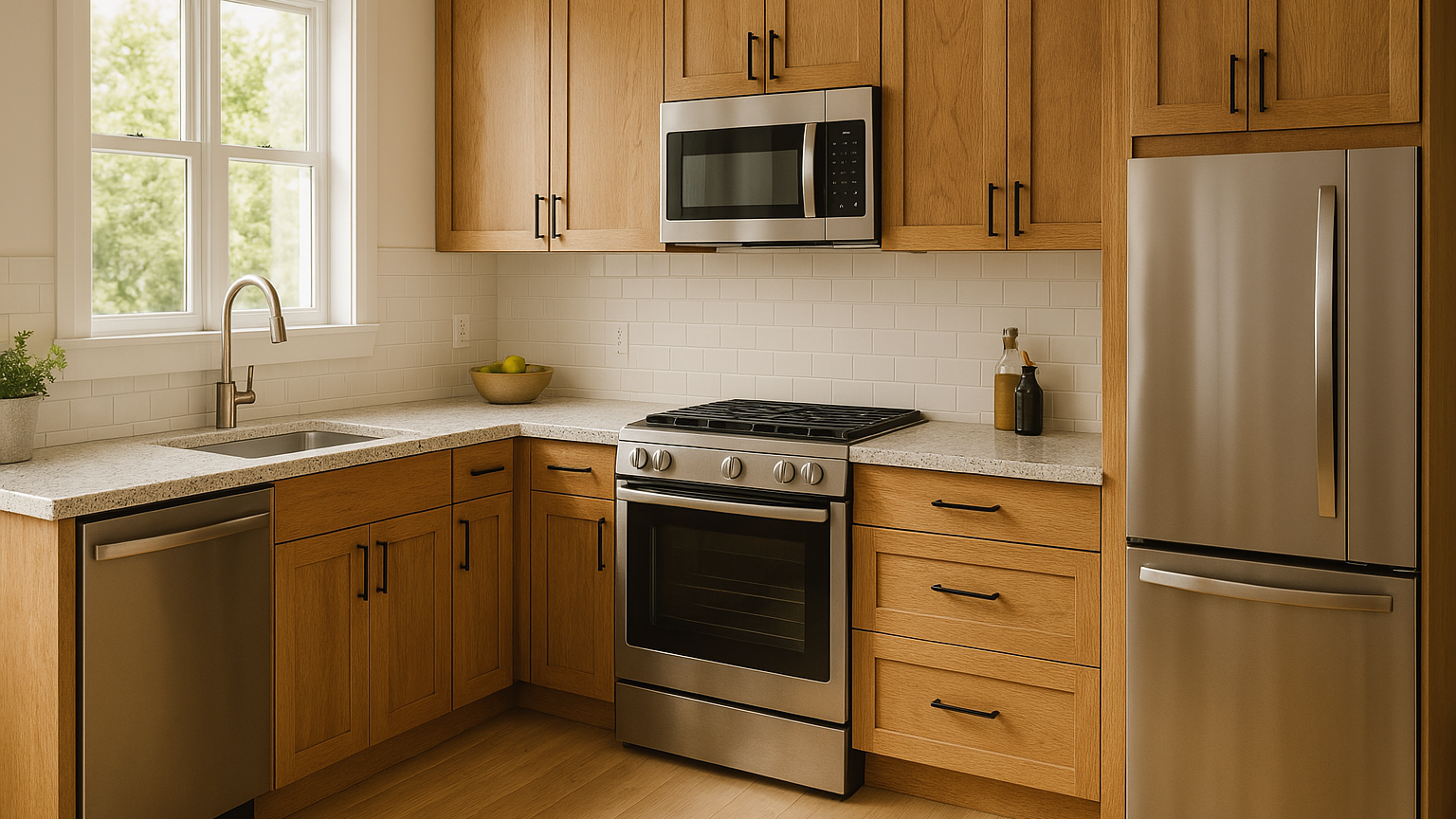
The kitchen embodies sustainable design’s central challenge—balancing intensive resource use with environmental responsibility. This heart of the home typically accounts for a disproportionate share of energy and water consumption, material impact, and waste generation. Yet thoughtful design can transform kitchens into showcases of sustainability without compromising functionality or beauty.
Energy efficiency forms the foundation of sustainable kitchen design. Carefully selected appliances alone can reduce a kitchen’s energy footprint by 30-50% compared to conventional equivalents. Induction cooking technology offers particular promise, providing responsive performance while using significantly less energy than gas or conventional electric options. Complemented by LED lighting and smart controls, these high-efficiency systems dramatically reduce operational impacts.
Material selection presents the next frontier, with countertops, cabinetry, and flooring representing significant opportunities for sustainable choices. Recycled glass countertops offer exceptional durability and unique aesthetic qualities while diverting waste from landfills. FSC-certified wood cabinetry ensures responsible forest management, while rapidly renewable materials like bamboo provide sustainable flooring options.
I believe the kitchen offers particularly exciting opportunities for circular design thinking. Modular cabinetry that can be reconfigured rather than replaced, countertop materials that can be refinished multiple times, and durable fixtures designed for repair rather than replacement all contribute to reduced lifecycle impacts. These approaches not only decrease environmental footprint but often create more functional, adaptable spaces that evolve with changing needs.
Sustainable Bathrooms: Water Wisdom
Few spaces offer more concentrated opportunities for sustainable intervention than bathrooms, where water consumption, energy use, and material choices converge in a relatively small footprint. The typical American bathroom uses more water than many entire households in water-stressed regions—making efficiency improvements both environmentally significant and ethically important.
Water-efficient fixtures represent the most obvious starting point, with low-flow showerheads, faucets, and dual-flush toilets offering substantial conservation benefits without compromising performance. The best contemporary options use innovative technologies like air-infusion to maintain satisfying experiences while dramatically reducing consumption. These hardware choices can be complemented by greywater systems that capture and reuse shower and sink water for toilet flushing or irrigation, multiplying conservation benefits.
Material selections in bathrooms demand particular attention to moisture resistance and cleanability while still addressing broader environmental considerations. Natural stone and recycled glass tiles offer excellent durability in wet environments while providing distinctive aesthetic qualities that synthetic alternatives can’t match. For cabinetry, FSC-certified woods with water-resistant finishes provide sustainable alternatives to conventional particleboard vanities, offering both environmental benefits and superior longevity in moisture-prone environments.
What makes bathroom design particularly interesting from a sustainability perspective is the opportunity to transform a traditionally resource-intensive space into a regenerative one. Water-conserving fixtures, heat-recovery drains that capture energy from warm water, and daylight-optimizing design can dramatically reduce environmental impact while creating more pleasant, functional spaces. These improvements often enhance the user experience while decreasing resource consumption—a perfect example of how sustainable design can be both environmentally and experientially superior to conventional approaches.
Bedrooms: Creating Healthy Sleep Sanctuaries
The intimate nature of bedrooms makes them particularly important for sustainable design’s health dimensions. We spend approximately one-third of our lives in bedrooms, making their air quality, material selections, and overall ambiance directly relevant to our physical and mental wellbeing. Creating truly sustainable sleeping spaces requires attention to both environmental impact and human health considerations.
I believe that non-toxic materials should receive highest priority in bedroom environments. Conventional mattresses, synthetic carpeting, and chemical-laden paints can release volatile organic compounds that compromise air quality and potentially impact health. Natural fiber mattresses, organic bedding, solid wood furniture, and zero-VOC finishes provide healthier alternatives that support both environmental goals and human wellbeing. These choices create sleeping environments that promote restoration rather than introducing additional stressors.
Biophilic elements offer particular benefits in bedroom settings, creating connections to natural rhythms that support healthy sleep patterns. Carefully positioned windows maximize morning light exposure, supporting circadian regulation, while appropriate window coverings enable darkness when needed. Indoor plants improve air quality while providing psychological benefits, and natural materials create multisensory connections to nature that promote relaxation and stress reduction—making the sustainable bedroom not just environmentally responsible but actively health-promoting.
I think bedrooms present a unique opportunity to demonstrate how sustainable design can directly enhance quality of life. By focusing on creating truly restorative sleep environments, sustainable bedroom design connects environmental responsibility with one of our most fundamental wellbeing needs—quality sleep. This connection makes the benefits of sustainable choices immediately perceptible and personally relevant, providing powerful motivation for adoption beyond abstract environmental concerns.
The Future of Sustainable Interior Design
Emerging Materials and Technologies
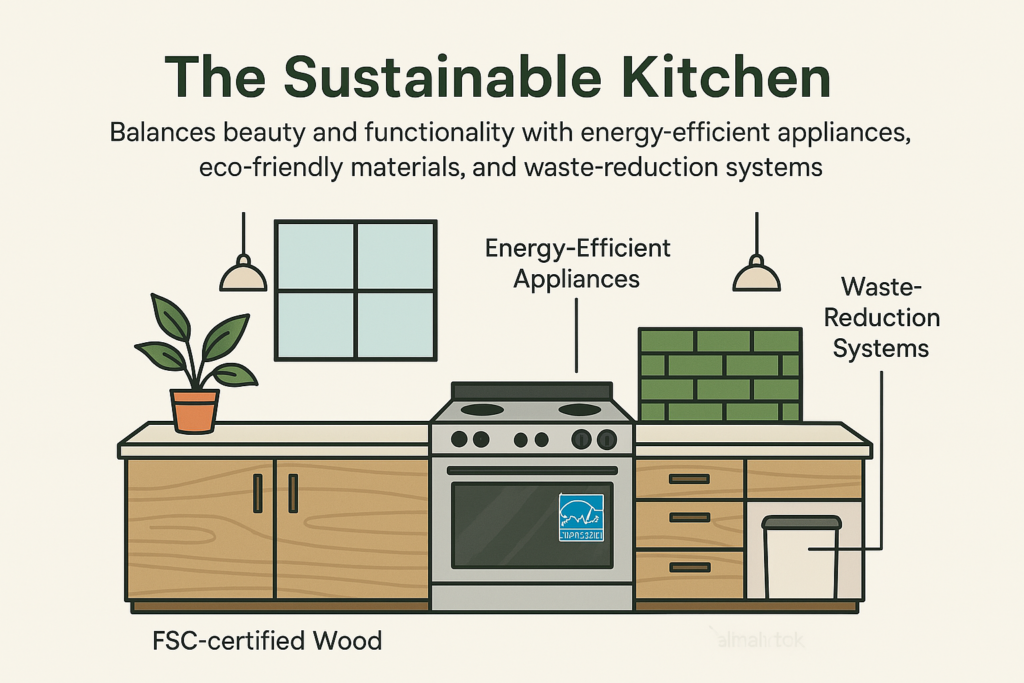
The frontier of sustainable interior design is constantly expanding with innovative materials and technologies that were science fiction just a decade ago. These developments are reshaping what’s possible in creating environmentally responsible interiors.
Mycelium composites grown from mushroom roots offer biodegradable alternatives to foam packaging and insulation. Algae-based textiles provide renewable alternatives to petroleum-derived fabrics. Agricultural waste streams are being transformed into durable building materials with unique aesthetic qualities. These innovations expand our palette of sustainable options while introducing entirely new aesthetic possibilities.
I believe smart building technologies represent another transformative frontier, enabling unprecedented optimization of resource use through integrated systems. The most advanced smart buildings continuously monitor and adjust lighting, temperature, ventilation, and water use based on occupancy patterns, weather conditions, and user preferences—achieving efficiency levels impossible through manual management. As these systems become more affordable and user-friendly, they’ll democratize access to resource optimization that was previously available only in high-end commercial settings.
What excites me most about these emerging technologies is their potential for synergistic integration. Smart systems that optimize resource use based on real-time conditions, biobased materials that sequester carbon rather than release it, and design approaches that support both human and ecosystem health collectively represent a fundamental reimagining of interior environments. Rather than merely reducing negative impacts, these integrated approaches create the potential for truly regenerative spaces that actively benefit both people and planet.
Sustainable Design for Everyone
Perhaps the most encouraging trend in sustainable interior design is its increasing accessibility across demographic and economic spectrums. What was once the province of luxury projects has steadily expanded into mainstream applications, with sustainable options now available at virtually every price point and style preference. This democratization promises to multiply sustainable design’s environmental benefits while ensuring that its health advantages aren’t limited to the privileged few.
Several factors are driving this democratization. Manufacturing scale has reduced costs for many sustainable materials, narrowing or eliminating price premiums compared to conventional alternatives. Major retailers have introduced affordable sustainable product lines, making eco-friendly options available through mainstream channels. Digital tools have expanded access to information and design resources, enabling DIY approaches to sustainable design that were previously difficult without professional guidance.
I’m particularly encouraged by the community-based sustainable design initiatives emerging in many regions—neighborhood tool libraries that reduce individual consumption, skill-sharing workshops that teach sustainable building techniques, and material exchanges that divert usable items from landfills. These grassroots approaches extend sustainable design principles beyond professional services into collaborative models that build community while reducing environmental impact—a powerful combination that promises to accelerate adoption among groups traditionally underserved by the design industry
